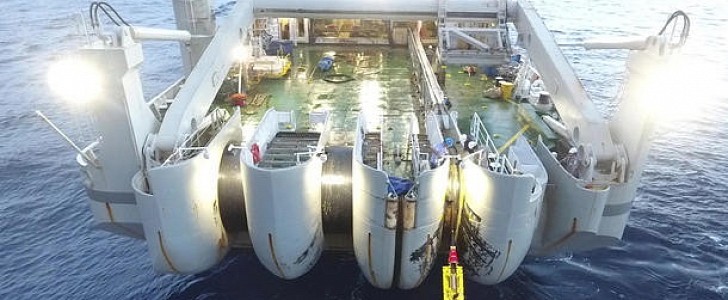Next-generation military vehicles and equipment require equally advanced training platforms and systems, not to mention the fact that virtual reality training is becoming increasingly important for the military. An important step in this direction is replacing the U.S. Navy’s old training ranges.
A well-known figure in the defense technology industry, L3Harris has been a reliable industrial partner for the Navy, for the past 60 years. Developing the Navy’s new Undersea Warfare Training Range (USWTR) is probably its most complex project so far. Over the past ten years, the company executed the first increment of the massive project. At the beginning of the month, it announced that increments II and III are ready to install, after it was awarded a $393 million contract.
The objective is to replace what are called “aging” deep-water and new shallow-water ranges with upgraded, state-of-the-art versions. During the first phase, L3Harris was in charge of installing ocean sensor and shore electronics subsystems on a 500-square-nautical-mile area located near Jacksonville, Florida.
Throughout the following phases, previously-installed systems will be replaced and upgraded, at the other range locations, including Southern California, Hawaii and Bahamas.
Undersea Warfare Training basically means anti-submarine combat techniques and strategies that require not only specific deep-water locations, but also an entire range of advanced equipment. The USWTRs are designed to allow ships, submarines and aircraft to practice tracking targets, both on the surface and subsurface of the water.
It’s truly impressive what these training ranges are equipped with, from hundreds of highly-advanced acoustic sensors, to more than 600 miles (965 km) of undersea cables – all of which is connected to the control and display centers located on shore.
The purpose of this cutting-edge undersea range technology is to offer military crews an environment that is as close to real-world combat environment as possible, for operational readiness. By implementing the company’s On-Board Training System (OBTS), based on simulation software, team training, as well as individual training, are taken to the next level.
It’s a lengthy and costly process but, by the end of it, the U.S. Navy will benefit from state-of-the-art training ranges, for decades to come.
The objective is to replace what are called “aging” deep-water and new shallow-water ranges with upgraded, state-of-the-art versions. During the first phase, L3Harris was in charge of installing ocean sensor and shore electronics subsystems on a 500-square-nautical-mile area located near Jacksonville, Florida.
Throughout the following phases, previously-installed systems will be replaced and upgraded, at the other range locations, including Southern California, Hawaii and Bahamas.
Undersea Warfare Training basically means anti-submarine combat techniques and strategies that require not only specific deep-water locations, but also an entire range of advanced equipment. The USWTRs are designed to allow ships, submarines and aircraft to practice tracking targets, both on the surface and subsurface of the water.
It’s truly impressive what these training ranges are equipped with, from hundreds of highly-advanced acoustic sensors, to more than 600 miles (965 km) of undersea cables – all of which is connected to the control and display centers located on shore.
The purpose of this cutting-edge undersea range technology is to offer military crews an environment that is as close to real-world combat environment as possible, for operational readiness. By implementing the company’s On-Board Training System (OBTS), based on simulation software, team training, as well as individual training, are taken to the next level.
It’s a lengthy and costly process but, by the end of it, the U.S. Navy will benefit from state-of-the-art training ranges, for decades to come.






